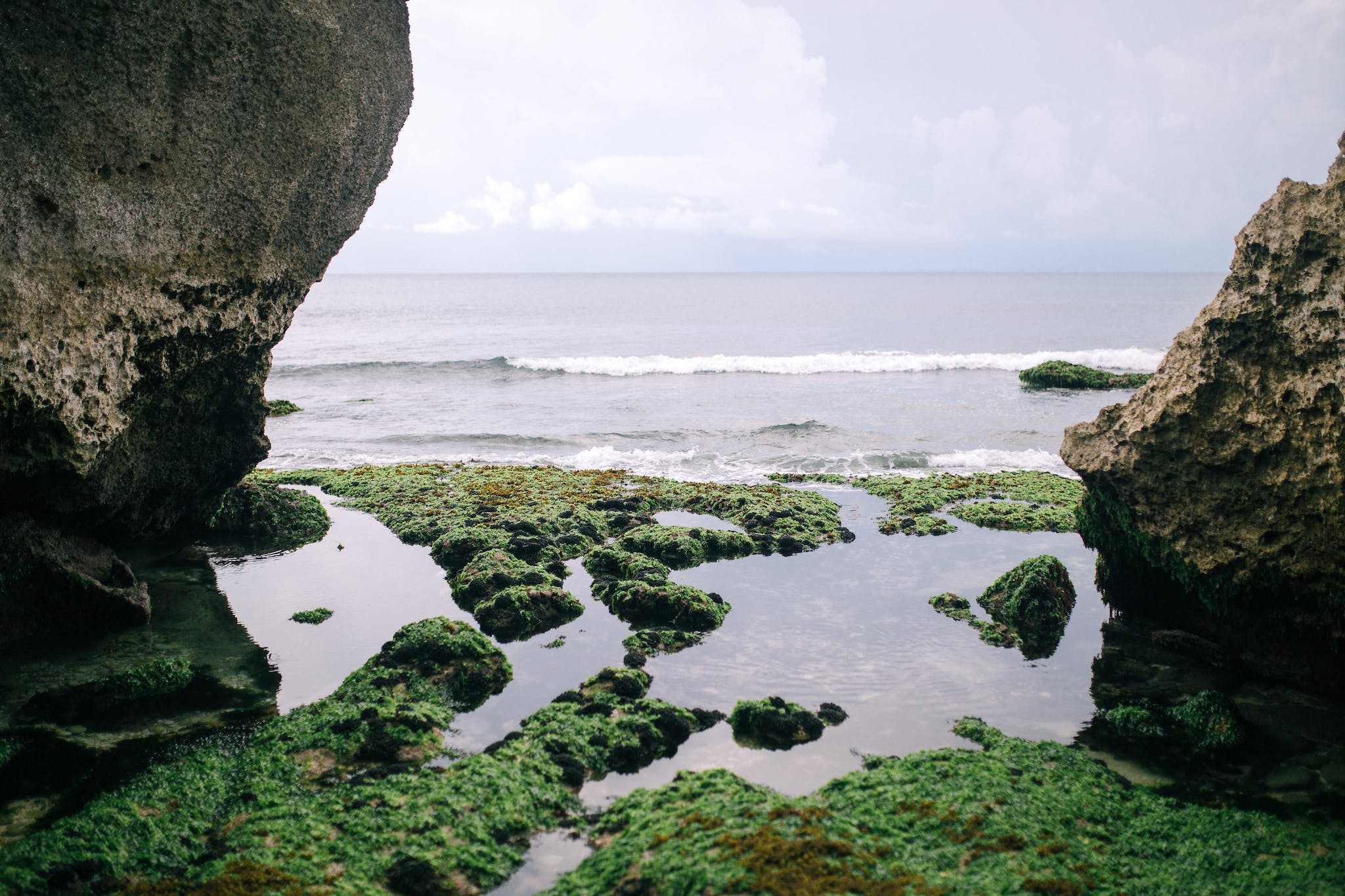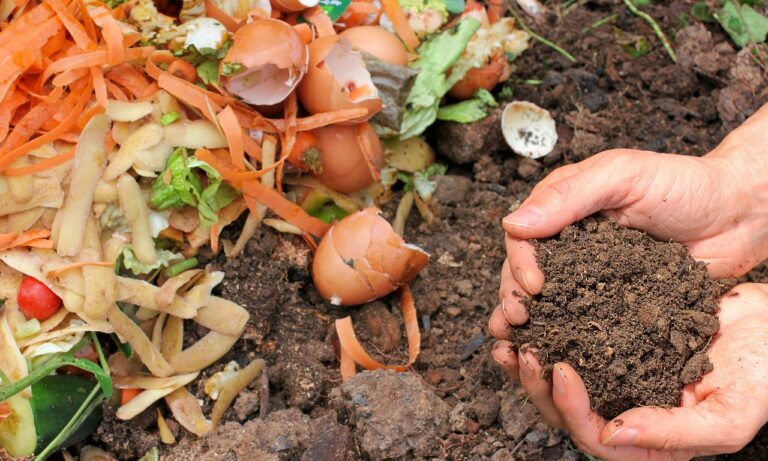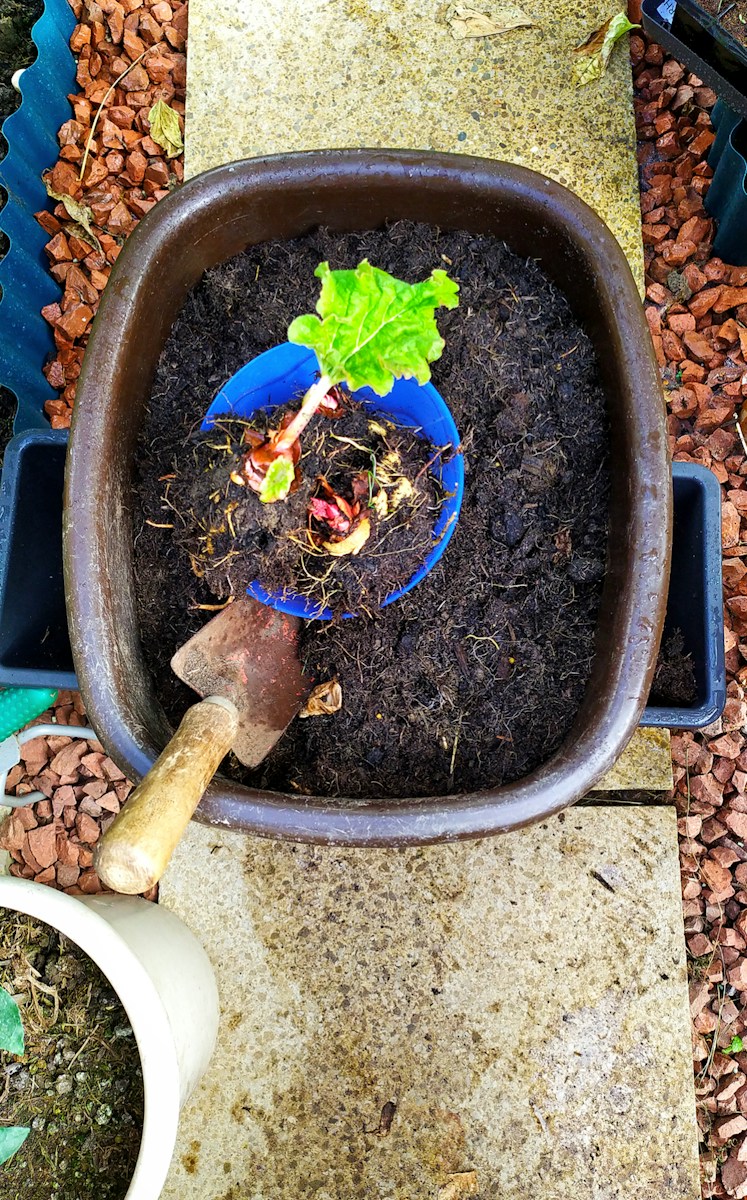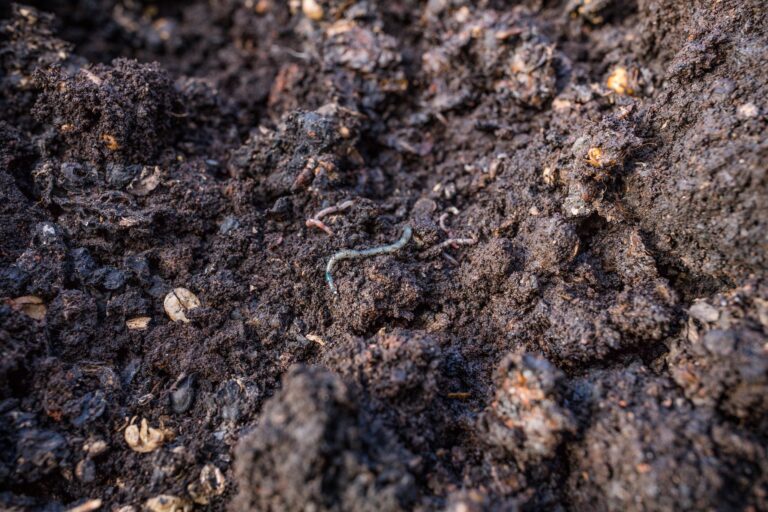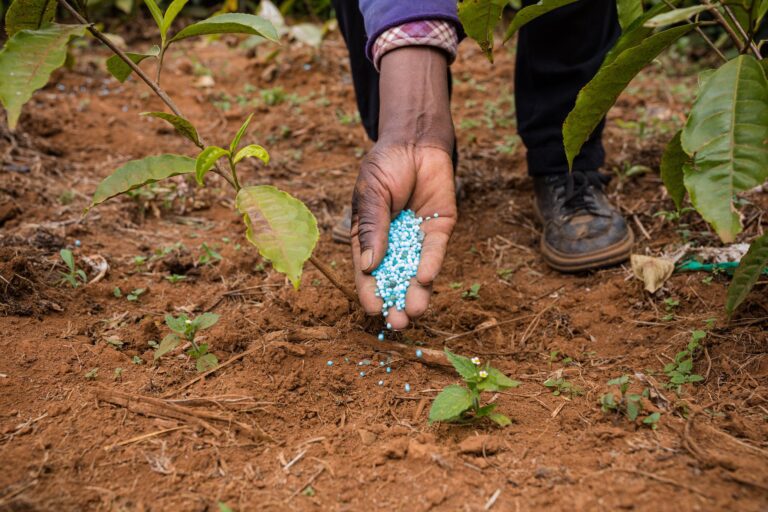When I first began experimenting with composting, I stumbled upon an abundant resource that most people overlook: seaweed. Living near the beach , I have easy access to seaweed washed up on the shore.
Seaweed, often underestimated, is a valuable resource for composting and gardening. Its nutrient-dense composition enriches the soil, promoting robust plant growth and improving soil structure. Whether used directly in garden beds, added to compost piles, or incorporated as mulch, seaweed offers multifaceted benefits. While debates exist on washing seaweed due to potential salt or sand residues, personal judgment based on the condition of the seaweed is crucial. Experimentation, as always in gardening, helps determine the best approach for individual conditions.
Over time, I’ve gathered various insights on using seaweed in composting. In this article, I’ll share my experiences, along with some advice from fellow garden enthusiasts.
Concerns About Salt in the Seaweed
I’ve added seaweed to my compost piles multiple times. The surprising thing? I don’t wash it. Initially, I was skeptical about adding unwashed seaweed, thinking it might introduce salt or other elements that could harm my garden. However, I’ve observed that while it does take longer to break down compared to other organic materials, the results are satisfactory.
The rate of decomposition might vary depending on where you live. For instance, since I live in Greece, the climate and soil conditions might differ from other regions. Therefore, it’s always a good idea to experiment and see what works best for your compost.
Gathering Seaweed: To Wash or Not to Wash?
Living near the beach means I regularly collect washed-up seaweed. While some of my fellow gardeners advise washing the seaweed due to potential sand or salt residues, I’ve also heard opposing views. Some believe that washing removes beneficial minerals, while others argue that the salt content could harm the plants.
From my experience, if the seaweed is covered in sand, it’s a good idea to give it a quick rinse. However, if it seems relatively clean, you might skip the washing step. Always trust your judgment and the specific conditions of the seaweed you collect.
Incorporating Seaweed into the Garden
Seaweed in Compost Piles
I mainly add seaweed to my compost piles, where it eventually breaks down and enriches the soil. But I’ve also tried adding it directly to garden beds. It’s essential to note that when adding seaweed directly to beds, covering it with a layer of hay or mulch can help the decomposition process and prevent it from drying out too quickly.
Direct Application to Garden Beds
Another approach is to add seaweed directly to garden beds. This method can be particularly beneficial for plants that thrive in nutrient-rich environments. However, a few precautions and techniques can optimize the process:
- Preparation: If you’re collecting seaweed from the beach, it’s advisable to remove any visible debris or contaminants. While seaweed is generally clean, it’s better to err on the side of caution.
- Layering: When adding seaweed directly to garden beds, layering is crucial. Start with a base layer of seaweed, followed by a layer of hay or straw. This combination helps in regulating moisture levels, ensuring that the seaweed doesn’t dry out too quickly and aids in the decomposition process.
- Balancing with Other Materials: While seaweed is a valuable addition, it’s essential to maintain a balance. Mixing seaweed with other organic materials like leaves, kitchen scraps, or grass clippings can create a diverse composting environment, promoting faster decomposition and a more balanced nutrient profile.
My neighbor, who’s been growing vegetables for over half a century, swears by the benefits of seaweed. He simply adds it directly to his beds without washing. The result? Some of the best produce I’ve ever tasted. His organic gardening approach, combined with the regular addition of seaweed and compost, has transformed his soil into a fertile paradise.
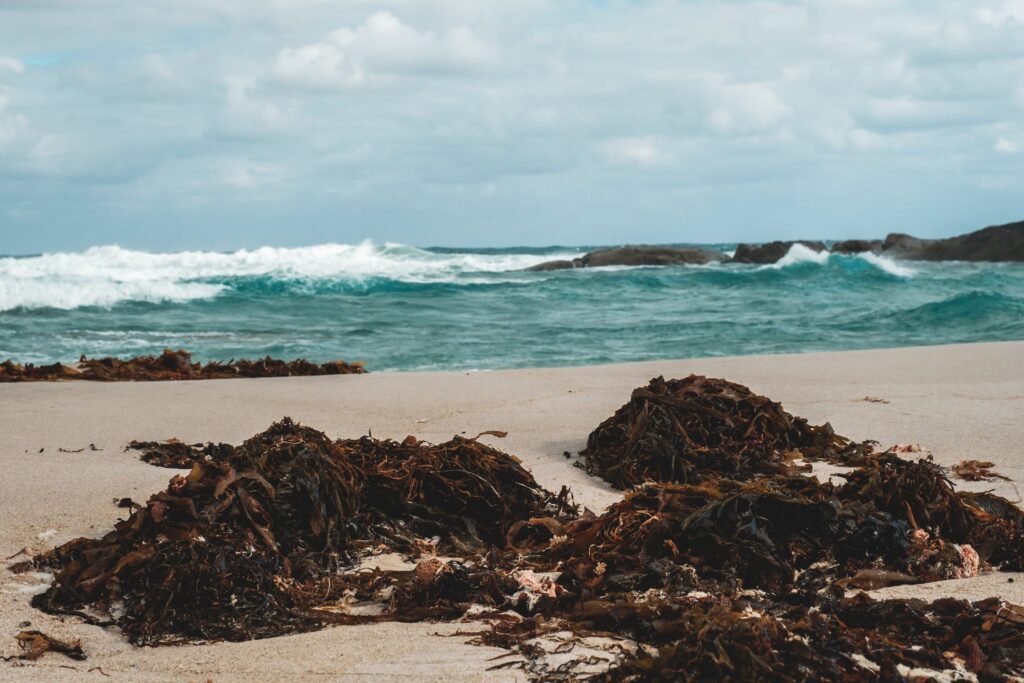
Benefits of Seaweed in Compost
Seaweed, often regarded as the unsung hero of organic gardening, offers a plethora of advantages when incorporated into composting practices. Its unique composition and rich nutrient profile make it a valuable resource for enhancing soil health and promoting robust plant growth. Let’s explore the multifaceted benefits of seaweed in compost in greater detail.
Rich Nutrient Profile
Seaweed is not just any organic material; it’s a powerhouse of nutrients. With approximately 90 water-soluble minerals, seaweed stands out as one of the most nutrient-dense materials available for composting. These minerals encompass a broad spectrum, ranging from essential elements like nitrogen, potassium, and phosphorus to trace minerals that play pivotal roles in plant growth and development.
Enhancing Soil Structure
One of the primary benefits of incorporating seaweed into compost is its ability to improve soil structure. Soil structure refers to the arrangement of soil particles and the spaces between them. A well-structured soil facilitates better root penetration, enhances water retention, and promotes aeration.
The organic matter present in seaweed helps bind soil particles together, creating aggregates that improve soil porosity and structure. As a result, plants can access nutrients more efficiently, and the risk of soil compaction is significantly reduced.
Boosting Plant Growth and Health
The nutrients and bioactive compounds in seaweed exert beneficial effects on plant growth and overall health. Potassium, for instance, plays a crucial role in regulating various physiological processes in plants, from photosynthesis to water uptake and disease resistance.
Additionally, seaweed contains growth-promoting hormones such as auxins, cytokinins, and gibberellins. These hormones stimulate cell division, elongation, and differentiation, leading to healthier, more vigorous plants. Moreover, the presence of antioxidants and other bioactive compounds in seaweed enhances plants’ resistance to environmental stressors, including pests, diseases, and adverse weather conditions.
Soil Amendment for Sandy Soils
For gardeners grappling with sandy soils, seaweed emerges as a boon. Sandy soils, characterized by large particles and poor water retention capabilities, often struggle to support robust plant growth. However, by incorporating seaweed into compost, you can significantly enhance the soil’s organic content.
The organic matter derived from seaweed improves the soil’s water retention capacity, ensuring that plants receive a consistent supply of moisture. Furthermore, the gradual decomposition of seaweed releases nutrients into the soil, fostering a nutrient-rich environment conducive to plant growth.
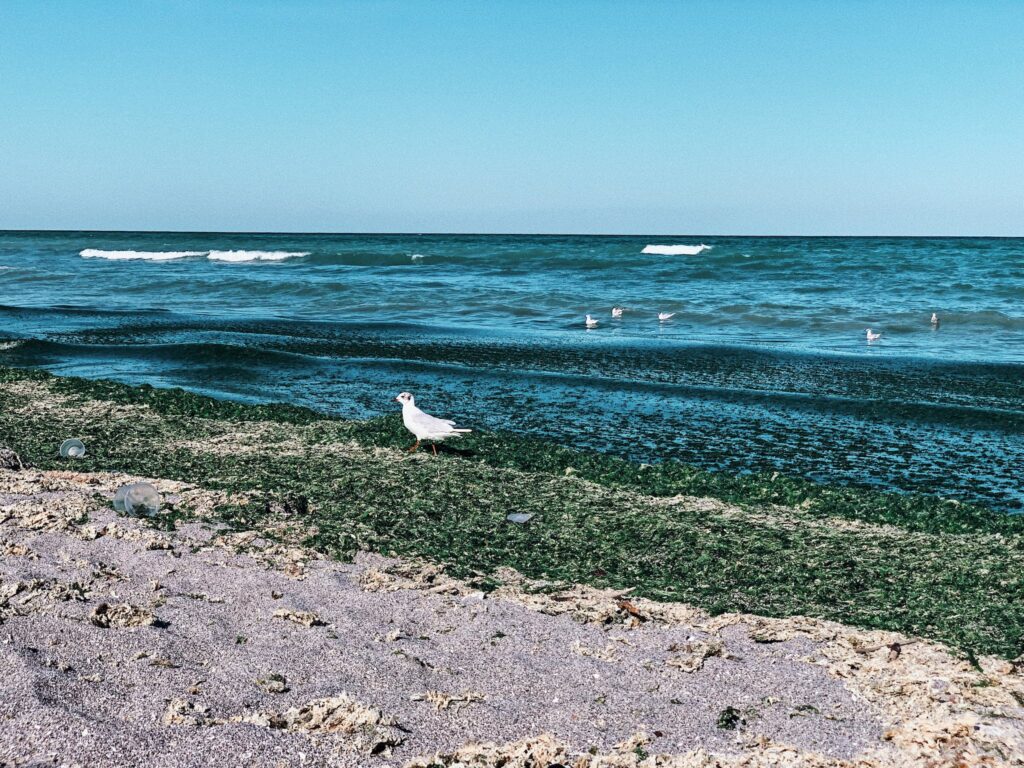
Other Approaches to Seaweed in Gardening
My Auntie’s gardening prowess has always been a source of inspiration for me. Living near the coast, she had a front-row seat to the seasonal influx of seaweed brought ashore by strong tides or winds. Rather than viewing it as mere beach debris, she recognized its potential as a valuable resource for her garden.
After every significant tide or wind event, Auntie would gather unwashed seaweed and spread it generously across her garden beds, using it as a mulch. Over time, she observed remarkable transformations in her garden. The seaweed mulch acted as a protective barrier, shielding the soil from extreme temperatures, conserving moisture, and suppressing weed growth.
Moreover, as the seaweed gradually decomposed, it released its nutrient-rich content into the soil, creating a fertile environment for plants. The result was a lush, vibrant garden teeming with healthy plants and abundant produce. To this day, Auntie’s garden stands as a testament to the potent benefits of seaweed mulching, showcasing the potential of this natural resource in gardening.
In addition to my Auntie’s experiences, I’ve had the privilege of interacting with numerous gardeners who’ve explored various methods of integrating seaweed into their gardening routines. One such gardener shared his multi-faceted approach to utilizing seaweed:
- Direct Application as Mulch: Similar to Auntie’s method, this gardener added unwashed seaweed directly to his garden beds. By covering the seaweed with a layer of hay or straw, he created a conducive environment for decomposition. This technique not only enriched the soil with essential nutrients but also attracted earthworms, nature’s best aerators and soil improvers.
- Seaweed Tea: Taking a cue from traditional compost teas, this gardener experimented with creating a seaweed-infused liquid fertilizer. By soaking dried seaweed in water, he obtained a nutrient-rich solution that could be used to water plants, providing them with a boost of essential minerals and organic compounds.
- Incorporation into Compost: Recognizing seaweed’s nutrient-rich composition, this gardener incorporated it into his compost pile. By mixing seaweed with other organic materials like kitchen scraps, grass clippings, and leaves, he created a balanced compost mixture that accelerated decomposition and yielded a nutrient-dense compost.
Conclusion
Using seaweed in composting is not only feasible but also beneficial. Whether you choose to wash it or add it directly to your garden beds, seaweed can significantly enhance soil health and plant growth. However, as with any gardening practice, it’s essential to experiment and find what works best for your specific conditions.
Remember, gardening is all about learning and adapting. So why not give seaweed a try in your compost? Who knows, you might just discover a secret ingredient that transforms your garden into a lush paradise.
